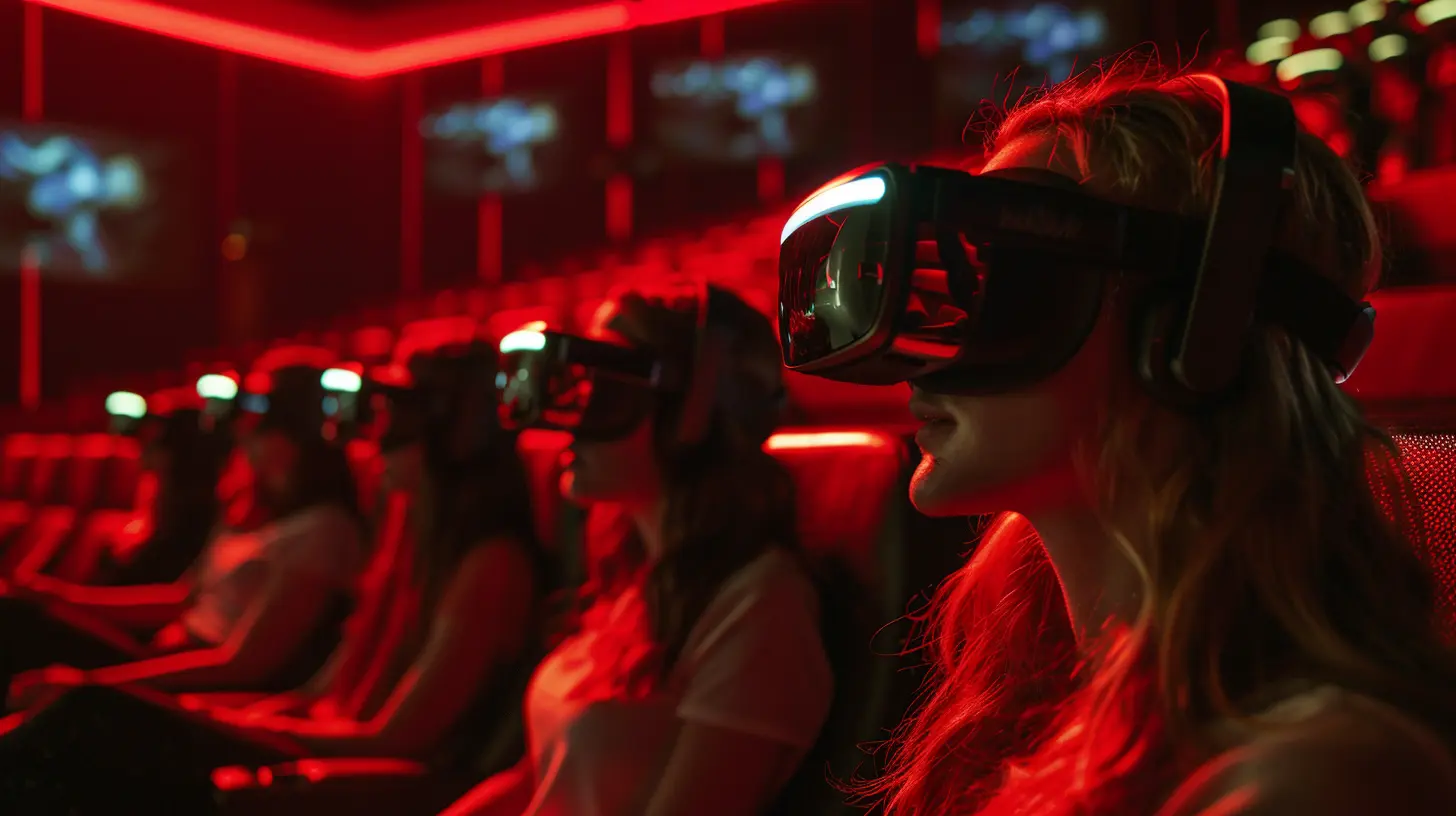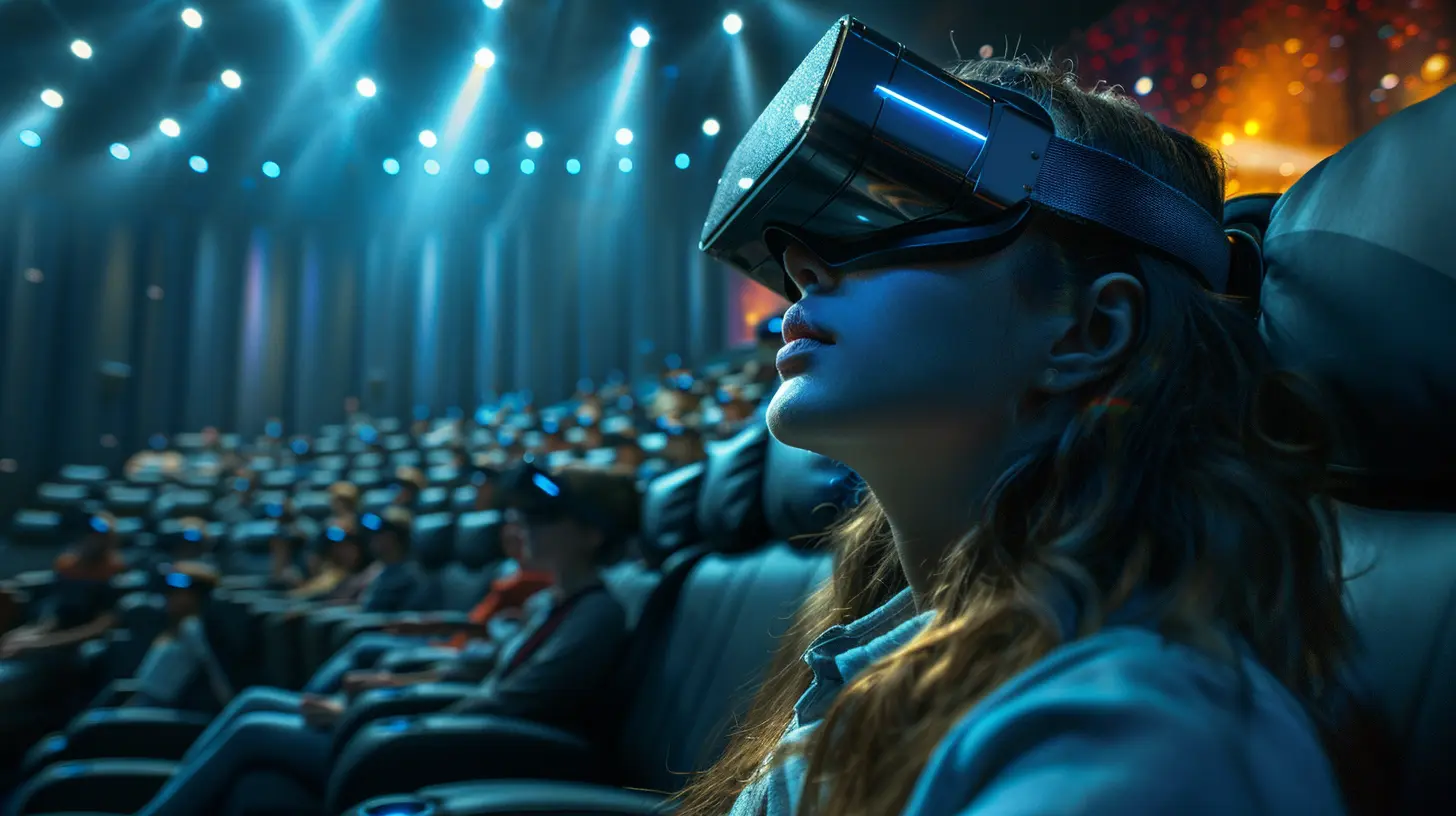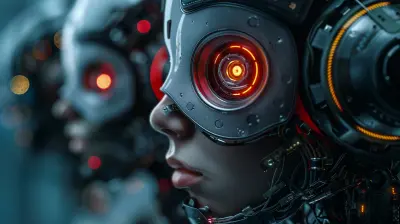Virtual Reality and Cinematic Experiences: The Future of Movie Watching
3 August 2025
Remember the first time you sat in a theater, the lights dimmed, and the big screen transported you somewhere else entirely? That magical moment when the real world faded and you were swept into another reality? Well, things are changing… fast. With the rise of Virtual Reality (VR), we're not just watching movies anymore; we’re stepping inside them.
Think about it: what if you could be in the middle of the action, feel the tension, look around a scene, and follow the story from any angle? That’s the promise of VR in cinema, and it’s shaking up the very foundation of how we consume entertainment.
In this article, we’re diving into how Virtual Reality is reshaping movie watching, what it means for filmmakers and fans, and where it’s going from here. Buckle up—it’s going to be a wild, immersive ride.
What is Virtual Reality (VR), Really?
Let’s break it down simply.Virtual Reality is a fully immersive digital environment that shuts out the real world and replaces it with a computer-generated one. You wear a headset—like the Oculus Quest, PlayStation VR, or HTC Vive—and suddenly you’re no longer on your couch. You’re in space, underwater, or walking through a haunted forest. You can look up, down, all around—you’re in the scene.
But unlike traditional cinema, where you’re watching a flat screen (even if it’s in IMAX), VR makes you a participant. It turns passive watching into active experiencing.
So when we talk about Virtual Reality and cinematic experiences, we’re talking about a fundamental shift—not just an upgrade in picture quality, but a whole new dimension of storytelling.
How VR is Changing the Way We Watch Movies
1. Immersion Like Never Before
In VR, immersion is the name of the game. You're not watching a scene unfold—you’re living it.Imagine walking through a sci-fi city with neon lights flickering and drones flying overhead. Or sitting in the cockpit during a war film, hearing each explosion around you. Traditional cinema can create powerful visuals, but in VR, your senses are hijacked. You feel there.
This level of immersion adds emotional depth. You’re not just sympathizing with the hero—you’re standing next to them, possibly in danger yourself. It blurs the line between viewer and participant.
2. New Ways to Tell Stories
VR isn’t just a tech gimmick—it forces creators to rethink how stories are told.In traditional films, directors control what you see: every shot, every angle, every emotion is carefully framed. But in VR? You can look wherever you want. Up, down, behind you. It takes control from the filmmaker and hands it to the viewer.
That’s exciting—and terrifying—for directors. It means stories must be built in 360 degrees. Sound design, visual cues, character placement—all have to subtly guide the viewer without shouting “look over here!”
The result? More creative and experimental storytelling. Think of it like theater, cinema, and video games smashed into one art form.
3. More Personal and Interactive Experiences
VR allows for personalization in ways traditional film never could. You can choose where to go, who to follow, or even make decisions that affect the story.This kind of interactivity turns film into something closer to a game or a choose-your-own-adventure book. It’s not just about immersion—it’s about agency. And that’s a game-changer.
With interactive cinema, every viewer might have a slightly different experience. It becomes your story, not just the director’s.
The Current Landscape of VR Cinema
So where are we right now?VR films have been around for a few years, mostly in short film format. Projects like “Henry” by Oculus Story Studio, or “Dear Angelica,” have shown that VR can deliver emotional, narrative-driven experiences.
Film festivals like Sundance and Tribeca now have VR sections, showcasing everything from experimental shorts to narrative dramas. There’s even a growing genre of documentary VR—real-world stories you can walk through, feel, and explore.
Companies like Within, Baobab Studios, and Felix & Paul Studios are leading this charge, crafting beautiful, heartfelt stories that just happen to be in 360°.
But we’re still in the early days. Most content is short, and the gear can be expensive. There’s no Netflix of VR cinema yet—but we’re getting close.
The Technical Bits (Without Getting Boring)
Okay, let’s talk tech—but let’s keep it simple.To create immersive VR films, creators use 360-degree cameras or computer-generated environments. These capture or build entire worlds that you can move around in.
High-quality VR requires:
- High-resolution visuals (nobody wants pixelated faces up close)
- Spatial audio (so sound comes from the direction it should)
- Comfortable headsets (the less bulky, the better)
- Motion tracking (so your head and hand movements match the scene)
And as technology advances—thanks to better headsets, faster processing, and smarter software—the line between real and virtual keeps getting blurrier.
Challenges Facing VR Cinema
1. Accessibility and Cost
Let’s be real. Not everyone owns a VR headset—or wants to spend hundreds of dollars on one. Until headsets become as common as smartphones, VR movies won’t fully go mainstream.Plus, watching a 30-minute VR film can be more exhausting than a two-hour movie. The gear is still a bit clunky, and not everyone’s ready to wear goggles for entertainment.
2. Storytelling Constraints
As we said earlier, VR demands a new language of storytelling. But that’s not easy to learn.Most traditional directors aren’t trained for 360-degree environments. And writing compelling interactive narratives? That’s a whole new skill set.
There’s also the risk of overloading the viewer. In a 360° world, there’s so much to look at, it can distract from the story. Finding the right balance is a constant challenge.
3. Content Limitations
VR content is still limited. Compared to the ocean of options on Netflix or Prime, VR libraries are like a kiddie pool.That’s partly due to production time and cost—VR films are expensive and labor-intensive to make. And without a guaranteed audience, it’s hard for studios to justify the investment.
The Emotional Power of VR Cinema
Despite the challenges, VR has an emotional punch that regular movies find hard to match.There’s something incredibly intimate about these experiences. When a character looks directly at you, or when you’re alone in a scene with them, it can feel like a real connection. You’re not just watching emotions—you’re feeling them.
One viewer described a VR film about homelessness as “the first time I really understood what it’s like to live on the street.” That’s huge. VR can build empathy in powerful ways.
For documentaries, social issues, or human-interest stories, this kind of emotional connection is priceless.
Where Is This All Headed?
Let’s fast forward a few years.We can expect more affordable, wireless, high-res VR headsets. Better motion tracking. More intuitive controls. And yep—lots more content.
Streaming platforms will likely jump in. Maybe Netflix VR? Hulu already dabbled. Imagine watching a horror movie in VR with friends across the world—laughing, screaming, and turning your heads together.
We might even see hybrid cinemas—places where you go not just to watch a movie, but to experience it in VR pods. Social VR movie nights could become the new Netflix and chill.
And AI could play a role too—creating content on the fly based on your choices or emotional reactions.
The future of movie watching? It's not just on a screen. It’s all around you.
What Does This Mean for Filmmakers and Viewers?
For filmmakers, it’s both exciting and intimidating. It means learning new tools, collaborating with tech teams, rethinking narrative structures, and being okay with losing some control.But for those who embrace it, the creative possibilities are endless. You can craft worlds people live in, not just watch.
For viewers, it means more immersive, emotional, and personal cinematic experiences. Not everything will be VR, of course. Traditional movies aren’t going anywhere. But we’ll have a new option—a deeper way to connect with stories.
Final Thoughts
Virtual Reality and cinematic experiences are merging in ways we only dreamed of a decade ago. It’s not perfect yet. There are bumps (and cables) in the road. But make no mistake, it’s coming. And it’s going to change how we think about movies, stories, and maybe even ourselves.So next time you put on that headset, don’t just prepare to watch a movie. Prepare to live one.
all images in this post were generated using AI tools
Category:
Virtual RealityAuthor:

Michael Robinson
Discussion
rate this article
1 comments
Selene Vance
Finally, popcorn in VR!
August 16, 2025 at 3:52 AM

Michael Robinson
I'm glad you're excited! VR truly enhances the movie-watching experience, and popcorn just makes it better! 🍿


